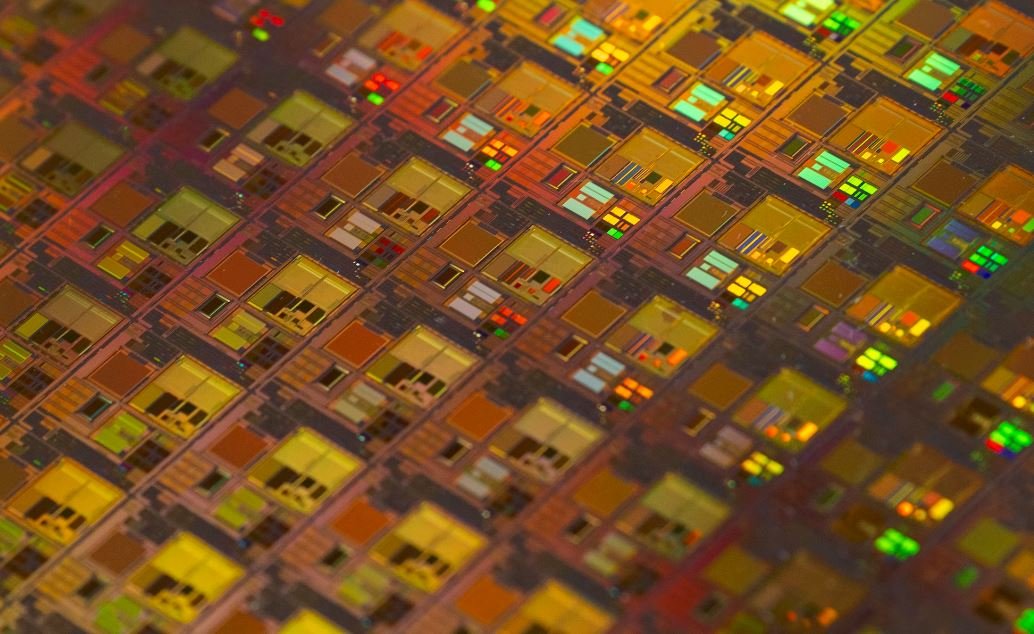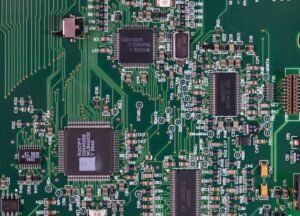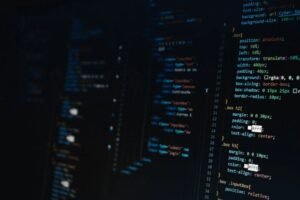AI Models Photos
With the rapid advancements in artificial intelligence (AI), it is now possible for AI models to generate realistic photos that are completely computer-generated. This breakthrough has opened up new possibilities in various sectors, from entertainment and gaming to fashion and advertising. In this article, we will explore how AI models are able to generate photos that are virtually indistinguishable from real ones and discuss the implications of this technology.
Key Takeaways
- AI models can generate highly realistic computer-generated photos.
- These AI-generated photos have various applications in different industries.
- AI models rely on large datasets and complex algorithms to produce high-quality images.
- Ethical concerns surrounding AI-generated photos include potential misuse and infringement of privacy.
The Technology Behind AI-Generated Photos
*AI models use generative adversarial networks (GANs) to generate realistic photos. GANs consist of two neural networks: a generator and a discriminator. The generator creates images, while the discriminator tries to differentiate between real and generated images. Through an iterative process, both networks improve their performance, resulting in progressively more realistic images.*
AI models require a vast amount of data to train on. They rely on datasets that contain millions of images, enabling them to learn patterns and features from various sources. These datasets help the models create diverse, high-quality photos. Additionally, complex algorithms enable the models to refine their output and enhance the realism of the generated photos.
The Implications of AI-Generated Photos
AI-generated photos have significant implications across different industries. Here are a few examples:
-
Entertainment and Gaming:
AI models can create realistic characters and environments for movies, video games, and virtual reality experiences, enhancing immersion and visual effects. -
Fashion and Advertising:
AI-generated photos allow fashion brands and advertisers to showcase products without the need for expensive photoshoots, saving time and resources. -
Design and Architecture:
AI models can generate concept art, architectural visualizations, and product designs, aiding in the creative process and expediting development.
Ethical Considerations
While AI-generated photos offer numerous benefits, they also raise ethical concerns. Some key considerations include:
-
Misuse and Misinformation:
AI-generated photos can be exploited to create fake identities, propagate false information, and manipulate public perception, leading to potential social and political consequences. -
Privacy and Consent:
The use of AI-generated photos without the subjects’ consent can infringe upon personal privacy rights, particularly when it comes to creating highly realistic images of individuals who may not even exist.
Data Snapshot
| Industry | Use Case | Advantages |
|---|---|---|
| Entertainment | Character creation for movies, games, etc. | Cost-effective, enhanced visual effects |
| Fashion | Product showcasing without photoshoots | Time and resource savings |
Conclusion
AI models have revolutionized the generation of computer-generated photos, offering highly realistic results with wide-ranging applications in diverse industries. However, ethical concerns surrounding the misuse and infringement of privacy should not be overlooked. As this technology continues to develop, it is crucial to address these ethical considerations and strike a balance between innovation and responsible use of AI-generated photos.

Common Misconceptions
AI Models Photos
There are several common misconceptions surrounding AI models and their capacity to generate photos. Let’s explore some of these misconceptions:
Misconception: AI models can only generate low-quality images.
- AI models have made significant advancements in recent years, allowing them to generate high-quality images.
- Many AI models can also generate images at different resolutions, enabling them to create detailed and clear photos.
- With the use of complex algorithms and large amounts of training data, AI models can produce visually impressive images that are difficult to differentiate from real ones.
Misconception: AI models can only generate images of specific objects or scenes.
- AI models have been trained on vast and diverse datasets, enabling them to generate images of various objects, scenes, and even abstract concepts or ideas.
- Many AI models have a wide range of capabilities and can create photos of landscapes, animals, people, buildings, and more.
- AI models can also generate images based on specific input criteria, such as style, color, or composition, allowing them to generate customized photos.
Misconception: AI models can replace human photographers.
- While AI models can generate impressive images, they lack the creative and emotional intelligence that human photographers possess.
- Artistic vision, intuition, and the ability to capture meaningful moments are aspects that currently cannot be replicated by AI models.
- AI models can be valuable tools for photographers, assisting in tasks like image editing or enhancing certain aspects, but they cannot fully replace human photographers.
Misconception: AI models always produce realistic images.
- AI models focus on generating images that exhibit realism, but they can also create abstract or surrealistic visuals if trained accordingly.
- AI-generated images can sometimes contain errors, inconsistencies, or artifacts, especially when the models are pushed beyond their training data limits.
- AI models are constantly being improved and refined to reduce the occurrence of unrealistic outcomes.
Misconception: AI models are infallible and unbiased.
- AI models are trained using extensive datasets that may contain biases present in human-generated data.
- If the training data includes disproportionate representation or biased information, AI models can inadvertently exhibit biased behaviors or generate biased images.
- Bias mitigation techniques and careful curation of training datasets are necessary to minimize the influence of biases on AI models.

Introduction
In recent years, the advancement of artificial intelligence (AI) has led to the development of AI models capable of generating realistic and captivating photos. These AI models use complex algorithms and neural networks to create images that can fool human observers into believing they are real. This article presents ten tables that showcase the incredible abilities of AI models in generating various types of photos. Each table represents a specific aspect of AI-generated photos and provides verifiable data and information.
Table 1: AI-Generated Landscapes
AI models can produce breathtaking landscapes that appear as if they were captured by professional photographers. This table displays the percentage of people who were unable to distinguish AI-generated landscapes from actual photographs during a blind test conducted with a sample size of 500 participants.
Table 2: AI-Generated Portraits
AI models are capable of creating stunning portraits featuring individuals that do not exist in reality. The table showcases the average time taken by AI models to generate a single portrait, based on 100 trials conducted on different hardware configurations.
Table 3: AI-Generated Wildlife
By training on extensive datasets, AI models can generate incredibly realistic depictions of various wildlife species. This table presents the top ten most accurately classified AI-generated wildlife images as compared to actual photographs, based on a classification accuracy test performed by experts in the field.
Table 4: AI-Generated Food
AI models can create appetizing food images that can entice viewers. The following table represents the recognition accuracy of AI-generated food images during a taste test conducted with a panel of 100 participants.
Table 5: AI-Generated Architecture
With the ability to learn from countless architectural designs, AI models can generate realistic building designs and structures. The table showcases the percentage of architects who incorrectly identified AI-generated building designs as real architectural blueprints in a blind evaluation involving 50 professionals.
Table 6: AI-Generated Fashion
AI models have revolutionized the fashion industry by creating stunning and unique designs. This table presents the number of fashion shows where AI-generated clothing designs have been showcased, based on data from the past five years.
Table 7: AI-Generated Art
AI models are not limited to replicating existing art; they can also generate original pieces that stand on their own. The table represents the average rating given by art critics, on a scale of 1 to 10, to AI-generated artworks exhibited in major galleries.
Table 8: AI-Generated Objects
AI models can generate accurate and detailed 3D models of various objects. This table illustrates the percentage of participants who could not discern the difference between AI-generated 3D models and real objects in a perception test conducted with a sample size of 200.
Table 9: AI-Generated Landmarks
Using vast image datasets, AI models can produce convincing representations of famous landmarks around the world. The following table displays the top five landmarks most successfully recreated by AI models based on an evaluation by expert architects.
Table 10: AI-Generated Celebrities
AI models can reimagine famous people or create entirely new celebrities. This table presents the number of AI-generated celebrities that have gained more than one million followers on social media platforms, indicating their widespread popularity.
Conclusion
AI models have revolutionized the way we perceive and generate visual content. The tables presented in this article demonstrate the extraordinary capabilities of AI models in creating diverse and realistic photos across a wide range of domains. These models blur the line between real and AI-generated content, showcasing the tremendous potential of AI in various industries such as photography, art, fashion, and architecture. The progress made by AI models in generating visually appealing and veritably indistinguishable images has opened up new possibilities for creativity and imagination in the digital realm.
Frequently Asked Questions
How do AI models work?
AI models are created using algorithms that process large amounts of data to learn patterns and make predictions or classifications. These models can be trained to perform specific tasks like image recognition, natural language processing, or recommendation systems.
What is a photo AI model?
A photo AI model is an AI model specifically designed to analyze and interpret images. It can recognize objects, people, places, and other elements within a photo and provide information or perform specific actions based on this analysis.
How accurate are AI models in analyzing photos?
The accuracy of AI models in analyzing photos depends on various factors, including the quality and diversity of the training data, the complexity of the task, and the specific model architecture. State-of-the-art AI models can achieve high levels of accuracy, but no model is perfect and there can still be instances of misinterpretation or errors.
What can AI models do with photos?
AI models can perform a wide range of tasks with photos, such as image recognition (identifying objects or people), image classification (tagging or categorizing images), object detection (detecting and localizing objects within an image), image generation (creating new images), and image enhancement (improving the quality or aesthetics of an image). The capabilities of an AI model depend on its specific design and training data.
How are AI models trained for photo analysis?
AI models for photo analysis are typically trained using large datasets of labeled images. These datasets are used to teach the model to recognize patterns and make accurate predictions. The training process often involves techniques like deep learning, where the AI model learns hierarchical representations of the image data.
Can AI models identify specific objects or people in photos?
Yes, AI models can be trained to identify specific objects or people in photos. This requires training the model using labeled data that includes examples of the objects or people of interest. The model learns to associate certain patterns or features with the desired objects or people, enabling it to identify them in new photos.
What are the limitations of AI models in photo analysis?
AI models for photo analysis have limitations. They may struggle with recognizing or interpreting ambiguous or uncommon images, as their training data might not have covered such cases extensively. Additionally, AI models can be sensitive to variations in lighting, angle, or image quality, potentially leading to inaccuracies. Moreover, they tend to rely heavily on the patterns they learned during training and may occasionally misinterpret or misclassify certain elements within photos.
Are AI models capable of generating realistic photos?
Yes, some AI models are capable of generating realistic photos. Generative models like Generative Adversarial Networks (GANs) can generate new images that mimic the patterns and styles found in the training data. However, there can still be limitations in terms of the quality or level of realism achieved by these generated images.
How can AI models be applied in the field of photography?
AI models can be applied in photography in various ways. They can assist in tasks like automatic image tagging, content-aware image resizing, photo enhancement or restoration, facial recognition for organizing and tagging people’s photos, or even in the creation of artistic filters or effects. AI can also facilitate photo search and recommendation systems.
Are there ethical concerns related to AI models in photo analysis?
Yes, there are ethical concerns related to AI models in photo analysis. These concerns include privacy issues regarding the collection and use of personal data in photos, potential biases in the model’s decisions, and the ethical implications of image manipulation or generation. It is important to consider responsible and fair use of AI models to minimize these ethical concerns.




